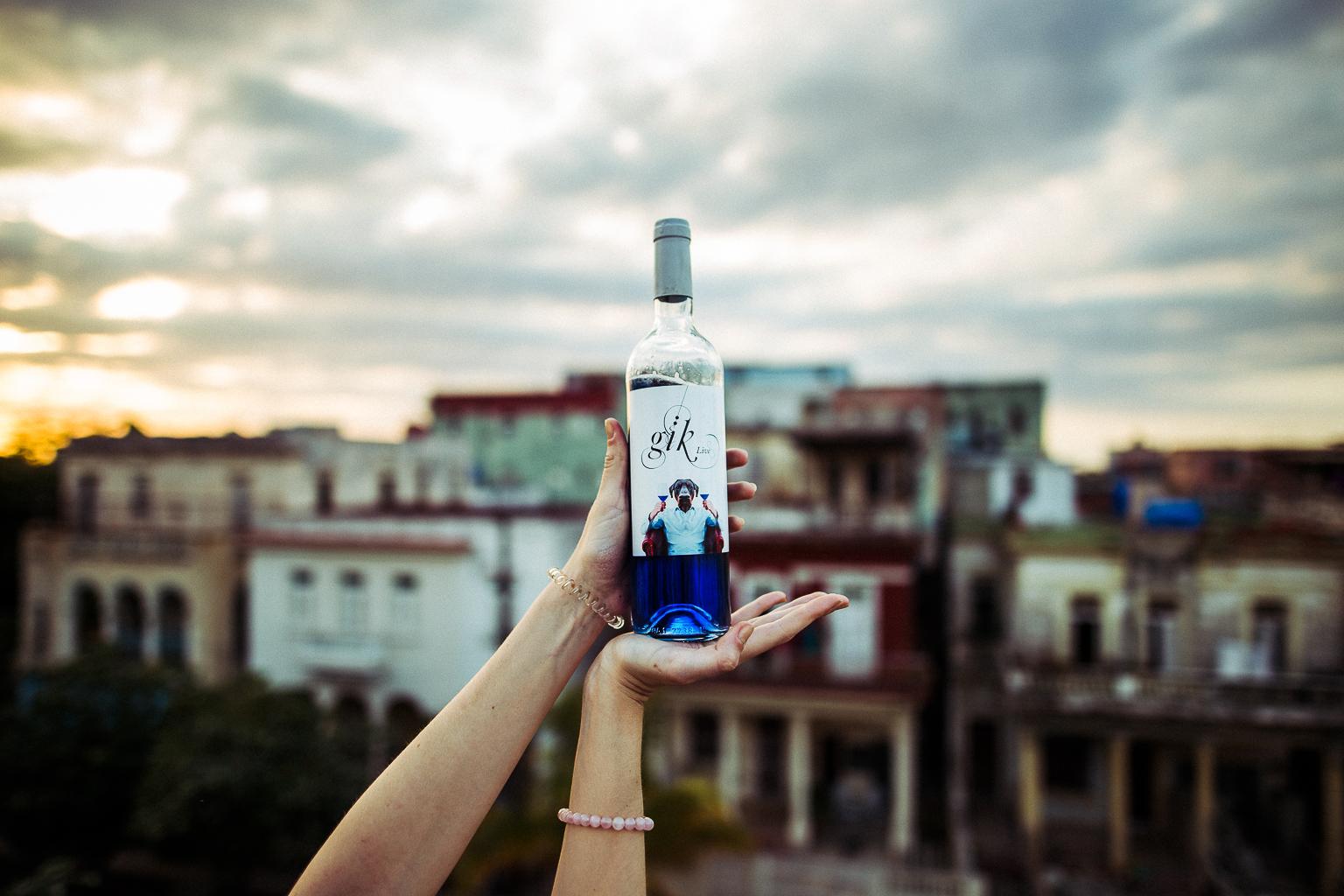Spanish blue wine Gik has proven a hit on Instagram – could it really make it to our dinner tables?
The blue beverage has hopes of cornering the market for younger drinkers, writes Zlata Rodionova, but it's not without critics


There’s nothing quite as good as a chilled glass of rose wine on a hot summer day, some white wine with a tasty seafood dish, or a bit of smooth red served with steak – but would you really pair your dinner with a glass of blue?
Developed in 2014 by five Spanish friends with no previous experience of the wine trade, Gik Blue comes in an Instagram-friendly neon colour and claims to be a new answer to the age-old question “red or white?”
One of the creators, Taig Mac Carthy, 28, from San Sebastian, told The Independent: “The wine trade remained static for centuries. We wanted to revolutionise the industry and create a unique product that would shake things up.”
The eye-catching drink, developed with the help of chemical engineers from the University of the Basque Country, hopes to capture the attention of younger drinkers who might be intimidated by the rules and guidelines associated with wine tasting.
Mr Mac Carthy said: “Gik Blue is an easy-to-drink beverage accessible to all and there are no rules about what you should drink it with. We wanted for someone who’s not a connoisseur to be able to appreciate its taste without having any previous knowledge of it.”
Surprisingly, the drink’s electric blue hue is completely natural. The wine is a mix of Spanish red and white grapes from the Castilla la Mancha and Rioja regions. Its bright colour comes from a pigment called anthocyanin, found in grape skin, along with indigotine, a dye extracted from plants. The resulting flavour is enhanced with non-caloric sweeteners to create a product with 11.5 per cent abv, which retails at around £10 a bottle.
Unlike rosé, blue wine seemed destined to be be nothing more than a gimmick. Until now.
The five founders spent two years developing the product and raised £26,000 to start the business from their university dorms in 2014.
Since its official launch in 2016, 500,000 bottles of Gik Blue have been sold to clients in 30 countries – including 100,000 bottles in the UK and 80,000 in France.
The company is now projected to increase turnover to €1.3m (£1.1m) by the end of the financial year.
Mr Mac Carthy said: “People are getting used to the idea of blue wine and our product is becoming more mainstream. It might take some time to convince sceptics, but I am confident we created a new category that has its place in the market.”
You have to remember that countries like Spain and France have a very strong wine culture. We didn’t experience the same backlash when we first launched in the US last year
Of course, the blue drink is not without its critics.
Spanish authorities banned the founders from describing Gik Blue as “wine”, stating there is no “blue wine” category in EU legislation.
In Europe, the bottle labelling is now required to describe Gik Blue as made of ”99 per cent wine and 1 per cent grape juice,” and is marketed under “other alcoholic beverages.” The rules are different in the US, where it can officially be called wine.
Mr Mac Carthy added: “Wine is generally a strictly regulated product with a deep history and when we first started approaching wineries, many refused to work with us and told us to create an app instead.
“But people have become more open to the idea and we now have partnerships with three different wineries in Spain. You also have to remember that countries like Spain and France have a very strong wine culture. We didn’t experience the same backlash when we first launched in the US last year.”
Legal issues aside, drinks are proliferating as quickly as an Intragram hashtag, and other companies are jumping on the blue wine bandwagon.
Another blue, named Vindigo, made headlines this summer when it went on sale in the south of France. In 2017 Chris Arbery, an English entrepreneur, also released a blue cava in the UK, called Skyfall.
Ben Smith, a spokesperson for Jacked, a new “aromatised wine-based drink” that wants to break from “wine convention”, told The Independent: “The world of wine is really ready for a shake up, and there’s a whole new audience of adult shoppers who are looking for more excitement and stand-out from their drinks.”
According to Aleesha Hansel, a qualified wine taster and journalist at Imbibe magazine, the elitism associated with the industry, as well as the price of some bottles, is putting off younger drinkers.
She told The Independent: “There is no getting around the fact that wine culture is often seen as elitist and pretentious.
“Unusual wines, like blue wine, allow drinkers to just have fun and to not have to think about whether they are serving it in the correctly shaped wine glass. The modern world is all about inclusion, as we have seen with growing rights of historically downtrodden communities, and wines like this tap into that movement.”
500,000
That’s how many bottles of Gik Wine have been sold since the blue beverage launched in 2016
Instagram, which has been shaping the way we eat, drink and experience food over the last couple of years, has a big role to play.
Lindsay Cornelissen, founder of independent online wine merchant Wines With Attitude, said: “Instagram certainly has a growing influence on wine trends, especially amongst millennials. And you can’t deny that blue wine looks great on a sunny day, against the backdrop of the ocean.
“That said, the blue wine I have tasted was sweeter and more “entry-level” in style than a traditional white wine. It still has to prove itself both in terms of its natural characteristics and in terms of its general quality.”
Will we see the blue tipple popping up on menus any time soon? The social media door is open but only time will tell.
Ms Hansel said: “This product injects a bit of fun into an industry that does sometimes take itself too seriously and ultimately, if people like the taste, then cheers to that!
“But, by definition, popular culture demands that there will always be fads or new trends, which ultimately means at some point the novelty will wear off and people will move on to the next thing.”
Join our commenting forum
Join thought-provoking conversations, follow other Independent readers and see their replies
Comments